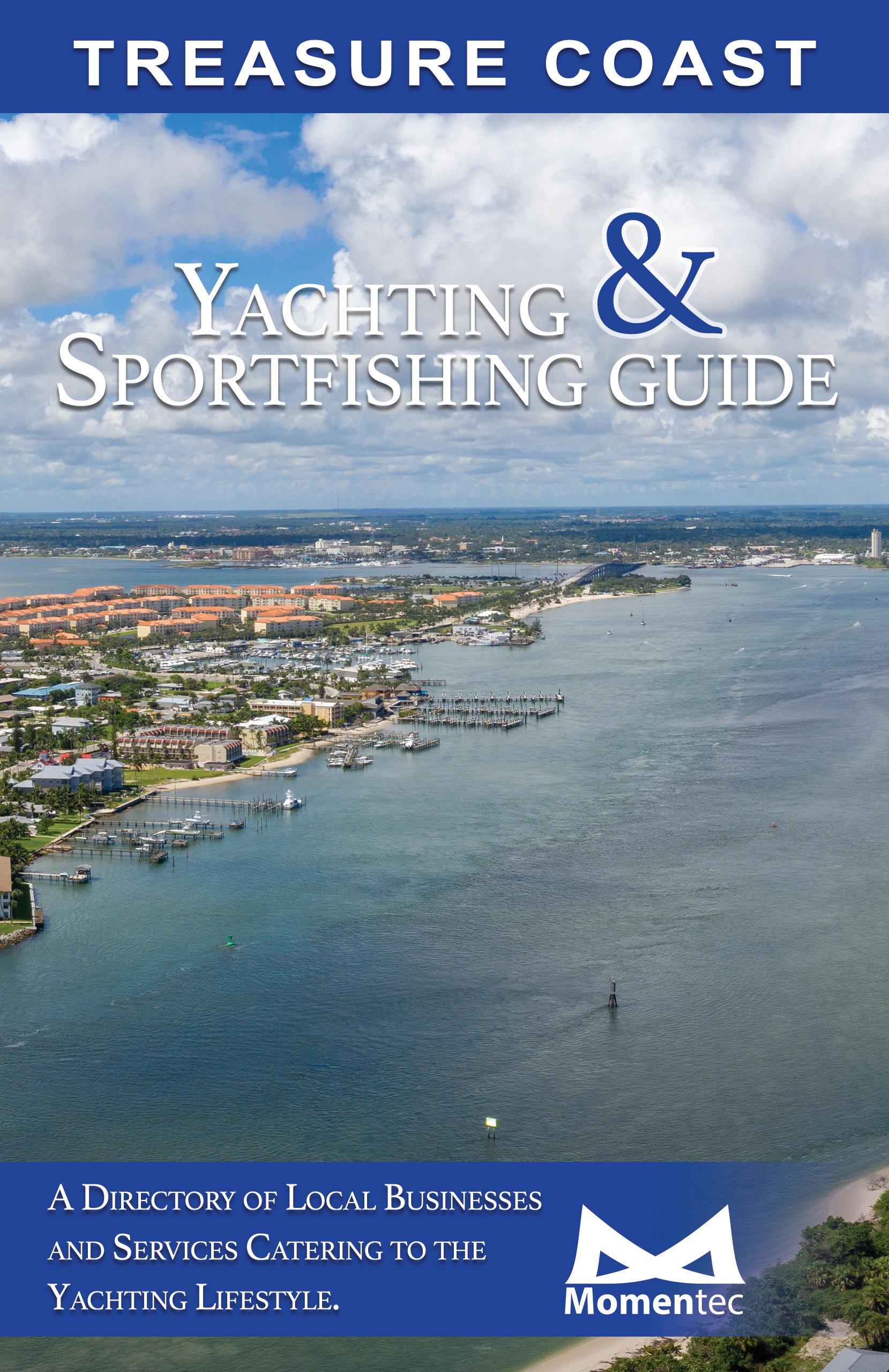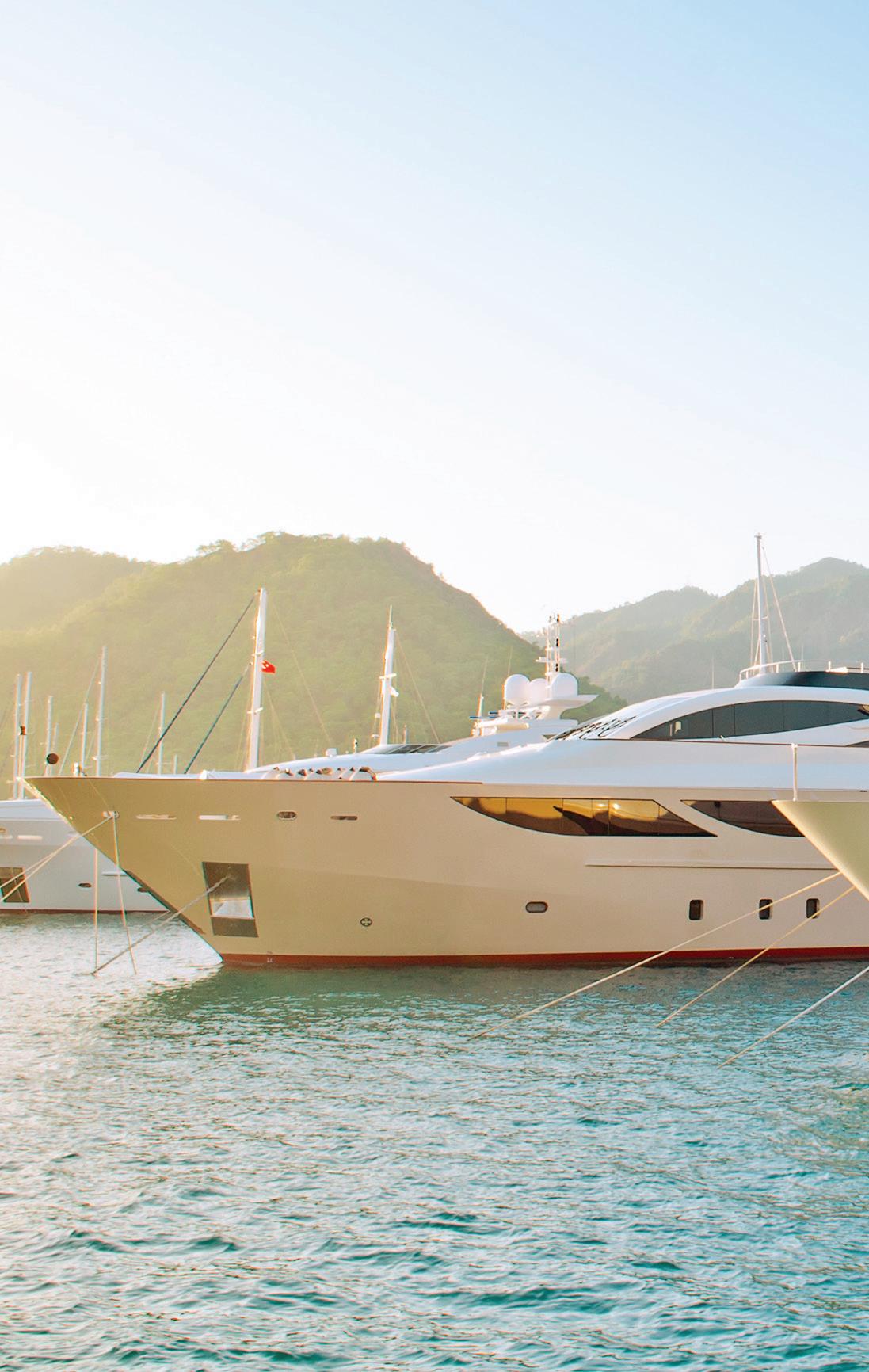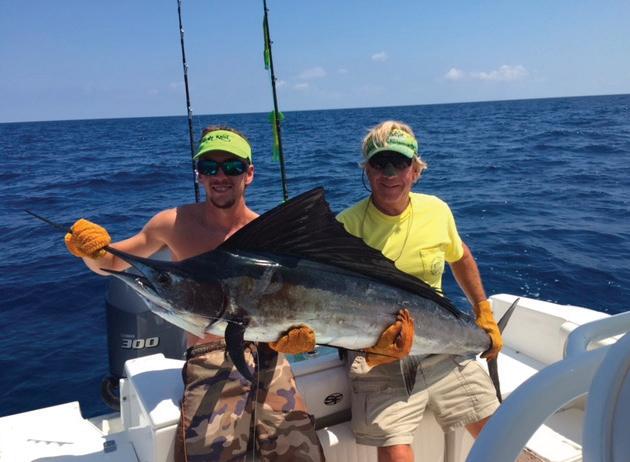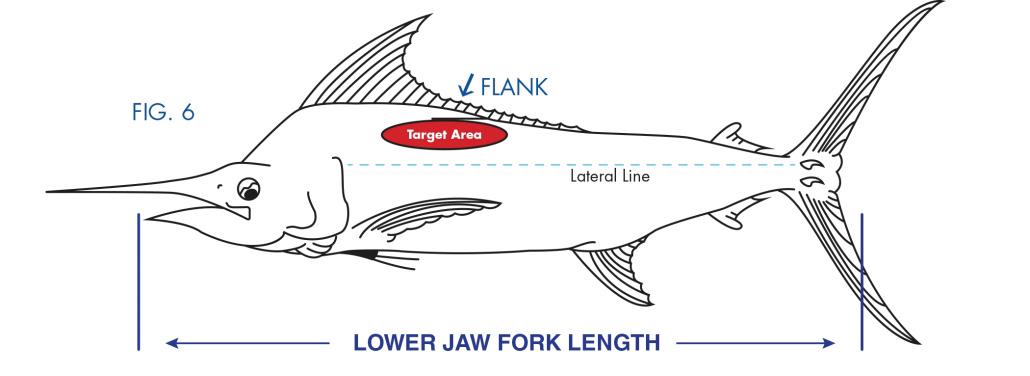












Fishing, sailing, scuba diving, or just cruising along the Treasure Coast’s picturesque waters promises to be plenty of fun and adventure as we embark upon 2025. Tight lines, taught sails, and safe seas to all.
The Fort Pierce Kingfish Mayhem kicks off the season. The Kingfish Mayhem Pro Series is world-class, competitive, and high paying. Welcome to the big leagues, with over $1,000,000 in prizes. It runs from March 14th to 16th and the awards will be on Sunday, April 17 at the Causeway Cove Marina.
This is followed by the Fort Pierce King Mackerel Invitational which awards $500,000 in 15 categories to 100 boats. It runs from April 17th to 20th and the awards will be handed out at the Fort Pierce City Marina on Sunday, April 23rd.
Beginning May 12th with the weigh-in on May 13th is the 13th Annual Capt. Hiram’s Central Florida Shootout in Sebastian. Award categories include 10 different species (inshore and offshore), a general entry category, as well as categories for Lady Anglers and Juniors. Awards party will be on May 5th and will be quite a doozy!
We have the 22nd Annual St. Lucie County Fishing Frenzy Fort Pierce sponsored by the St. Lucie Chamber of Commerce and Geico Treasure Coast. It takes place May 10-11 at the City Marina in historic downtown Fort Pierce. This offshore Dolphin fishing tournament offers 1st thru 4th place cash prizes for the heaviest Dolphin. Weigh-in is Saturday May 11th from 3:00 to 6:00 p.m. and will be one heck of a show!
Don’t forget to make plans for the Blue Water Open Offshore Charity Fishing Tournament out of the Sebastian Inlet on June 1st. Hosted by the Sebastian Exchange Club and held at Capt. Hiram’s, it draws competitors from all over to enjoy what is one of the most fun fundraisers all year along the Treasure Coast. For more info, to sign up to fish, or to sponsor, please go to www.fishingforcharity.org/bluewateropen/
For all ye’ sailors, the Treasure Coast Youth Sailing Foundation will have their summer regattas going strong from June thru August out of Jaycee Park in Fort Pierce. And the U.S. Sailing Center Martin County will host a full slate of regattas. Go to www.usscmc.org/regattas for updates.
They don’t call Florida’s Treasure Coast “The Sportfishing Capital of the World” for nothing! Get your boats ready for an awesome 2025. Full bait wells, coolers and tight lines! Tight sails! Ahoy mates! Have lots of fun out on the water and enjoy all the natural beauty it has to offer!!!



Q: Hi Captain Scott. Tell us a bit about yourself. When did you got hooked on fishing?
A: I grew up in this industry. Been working on boats since I was in my early teens in New Jersey. I think I was 3 or 4 when I first got a fishing pole in my hands. Got my license at 19 years old and became a blue fish captain of a drift boat.
One of my happiest days was when one of the guys on the bottom fish boat asked me to come captain on it. My first party boat I bought was when I was 28 years old, I’m now 55.
Q: Why did you decide to down here from Delaware to Florida, and why Fort Pierce?
A: All my family moved down to Florida. I sold my boat in Rehoboth Beach, came down here and went on some party boats. My ex’s 7-year-old daughter was my fishing partner. One day she looked me right in the eye on the way back home and said, “Scott, we have to buy another boat!” I asked her “Why?” She told me, “These guys are bozos!”
Two years later I rolled the boat in the inlet. My family lives in South Florida, but I picked Fort Pierce because I always liked the fishing and the layout of the inlet. Plus, there was a need for what type of big boat we wanted.
Q: What type of boat is the Miss Fort Pierce and what kind of work have you done on it recently?
A: It’s built by East Bay Boatworks. Custom built on the Outer Banks of North Carolina. Specifically, for passenger fishing. The boat builder is from generations of building passenger boats. It’s a proven hull for rough waters like the mid-Atlantic. I’m only the 4th owner. I just gave it a major retro fit. Brand new cabinet, interior walls. Bathrooms, sinks, complete yacht like paint job on the exterior hull. I kw to 2 kw transducers. Brand new electronics, state of the art.
Q: Tell us a bit about the local fishing?

A: We anchor fish off Fort Pierce, the only all day full time all day boat on the Treasure Coast. All trips are limited load – 28 passengers max. It can fit 78 but this way there’s no crowds, and way more personalized service. Everyone can pick their spot when they make their reservations, just like the airlines! We bottom fish mainly for snapper all year long. Every 3 to 4 months we switch how and where due to the season, the weather, water temperature. The bait is generally the same. We usually go 12 miles to 15 miles offshore, but every now and then as close as 6 miles.
Q: Tell us about your private charters, private parties, that sort of thing.
A: We’re available for fishing and cruises. Family, business, church. It can be booked on 5 to 9 hour trips. Also we do evening cruises on the Intracoastal and burials at sea. All booked in advance by calling our office. It’s a real personalized way for groups to get together. Really really good service and great reviews. It’s a clean boat with good bathrooms!
To find out more, or make reservations call Captain Scott Gold at (772) 766-019






29TH ANNUAL


MAY 2nd-10th
FRIDAY, MAY 2nd
SATURDAY, MAY 10TH




May 2nd - 10th
The St. Lucie County Chamber of Commerce will host its 21st Annual Fishing Frenzy, presented by Geico Treasure Coast on May 2-10, 2017 at the City Marina in Historic Downtown Fort Pierce. This offshore Dolphin fishing tournament offers $16,000.00 in cash and prizes, with a $10,000.00 Grand Prize for the heaviest Dolphin. COST: Boat Entry fee is $275.00. REMINDER: One Tournament T-Shirt is provided with each registration; additional t-shirts are $19. There is no cost to sit and enjoy the excitement as the weigh-in takes place! Weigh-in is Saturday, May 10th from 3:00 PM to 6:00 PM. To register go to 772-595-9999 or www.stluciechamber.org
7:00pm – 10:00pm
5:30pm – 8:30pm
7:00pm
8:00pm – 10:00pm
TUESDAY JUNE 3RD, 2025
PRE-PARTY AT SAILFISH MARINA GUEST SPEAKER, DRINK SPECIALS, VENDORS
FRIDAY, JUNE 20TH, 2025
CAPTAIN’S MEETING AT THE SAILFISH MARINA SILENT AUCTION
CAPTAIN’S MEETING RULES
CONTENDER OWNERS & SPONSOR PARTY AT SAILFISH MARINA, ABOVE THE RESTAURANT
SATURDAY, JUNE 21ST, 2025
6:30am – 3:30pm FISHING TIMES
1:00pm – 4:00pm WEIGH STATION TIMES
4:00pm – 8:30pm AWARDS DINNER & PARTY AT SAILFISH MARINA
5:30pm DINNER PROVIDED BY SAILFISH MARINA
4:30pm – 7:00pm SILENT AUCTION
7:00pm AWARDS PRESENTATION
8:00pm RAFFLE DRAWING




The Fort Pierce Sportfishing Club was established in 1980. We are a family-oriented organization whose members share an interest in sportfishing, conservation, community service, and boating.
Free to Attend. $60 to Join for single or family. Guests are welcome. 6:30pm @ Fort Pierce Yacht Club 700 N Indian River Dr, Fort Pierce, FL 34950
We have T-shirts for sale, 50/50 prizes, and guest speakers who share the best fishing info around.
We are a not-for-profit club, and our membership, sales, and tournaments allow us to give donations to various community interests, such as sinking of decommissioned boats for reef enhancement, scholarships to IRSC, and we have several sites for recycling old fishing lines, just to name a few!
The FPSC has been a staple in the fishing community in Fort Pierce since 1980!











Florida Atlantic University (FAU) Harbor Branch Oceanographic Institute is a world class research organization with a focus on exploring the marine environments, studying key species and understanding the connection between humans and the ocean. Founded in 1971 as Harbor Branch Oceanographic Foundation, Inc., the Institute expanded its reach to over 100 miles along Florida’s east coast when it joined Florida Atlantic University in 2007. Located in St. Lucie County, our 144acre campus along the Indian River Lagoon employs over 200 scientists, engineers, educators, staff and students. To this day, the Institute actively pursues solution-oriented research that addresses some of the most critical issues affecting coastal zones, oceans and human well-being.


FAU Harbor Branch has launched a new mission and we invite all who love the ocean to join us as we take a deep dive into the research being conducted at our site in Ft. Pierce, FL. With tours, exhibitions, programs, lectures and events both on-site and off, our outreach programs provide a variety of platforms through which scientists may share their knowledge, passions and achievements with people of all ages. Reflecting our role as a source of knowledge and education, Mission: Ocean Discovery is your portal for becoming an informed oceanographic citizen scientist.



Modifying the types of hooks you use can significantly affect a fish’s chances for survival after it is released. When fishing with natural bait (dead or alive), IGFA strongly encourages the use of non-offset circle hooks. Extensive research on species from salmon to sailfish has demonstrated that circle hooks gut hook significantly fewer fish without sacrificing catch rates. Lures that have treble hooks should have the barbs bent down or removed to facilitate easier hook removal.
Interested in the science behind circle hooks? Read Circle hooks, 'J' hooks and drop-back time: a hook performance study of the south Florida recreational live-bait fishery for sailfish, Istiophorus platypterus published in Fisheries Management and Ecology in 2007.
If you’re not going to photograph your fish or document it for record purposes, the best method is to not remove the fish from the water. In-water releases can be aided by the use of de-hooking devices that eliminate the need to boat the fish and keep hands safe distances away from the fish. If the fish has swallowed the hook, it is much better for the angler to cut the leader as close to the fish as possible, rather than trying to forcibly remove the hook.
If a fish needs to be removed from the water to remove the hook and/or document it for record purposes, anglers should use either their hands or knotless, rubberized landing net. Most small to moderately large sized fish can be landed by hand. Ideally, this should be done with wet hands or soft, wet gloves to minimize slime and scale loss. Lip gripping devices may be used to help subdue fish. However, they should not be used to hoist fish vertically out of the water, as this can cause damage to jaw muscle and bone as well as to internal organs. The best method for removing fish from the water is to grip the fish or the lower jaw and support the fish’s underside. Again, the point is always to hold fish horizontally and not vertically.

Foundation works worldwide to advance the conservation of billfish and associated species to improve the health of oceans and economies. Considering the context of a planet with over seven billion human inhabitants, conservation strategies must be forward-looking and adaptive. By accounting for the roles of billfish within the marine environment as well as in relation to their interactions with humanity, TBF’s conservation campaigns maintain the flexibility to adapt to emergent threats as well as those which have historically confronted resource managers. TBF employs a multi-tiered, proactive suite of initiatives involving research—both biological and socioeconomic–education, and advocacy projects. As billfish and other highly migratory species are not confined to the territorial waters of any one nation, these strategies must also take into account the differences in culture and law inherent to the international arena. Empowered by an internationally diverse constituent network, The Billfish Foundation is uniquely equipped to do just this.

Established in 1990, The Billfish Foundation’s Tag and Release Program is the largest private billfish tagging database in the world and the cornerstone of TBF’s conservation and advocacy efforts. With more than 220,000 tag and release reports, TBF receives over 15,000 tag and release records annually from across the globe and provides vital information for billfish conservation.
The success of TBF’s Tag and Release program is contributed to the dedicated anglers and captains around the globe that voluntarily tag, release, and report their billfish catches. The deployment of traditional tags and the data gathered from recaptured billfish provides valuable scientific data to further understand growth rates, migratory patterns, habitat utilization, and post-release survival rates. Tag and release data also provides valuable information for stock assessments that are instrumental in a time when industrial longlines represent the largest source of marlin mortality. This valuable data, much of it impossible to measure without the use of traditional tagging, provides the groundwork for conservation minded policy, scientific advancement, and gives insight into the demographics and socio-economic benefits generated from billfishing.
As tagging provides The Billfish Foundation with substance for its conservation efforts, TBF recognizes those anglers and captains that tag and release the most billfish each year at an awards ceremony at the Miami International Boat Show. The annual International Tag & Release Competition recognizes members who tag and release the most billfish by species in
each of the world’s oceans. TBF award winners are the ‘who’s who of the billfishing world’ and are those that do not just catch and release a great number of fish, but embody and share a common conservation ethic. As captains and anglers on the water represent the first line in billfish conservation, recognition of their efforts provides a means to illustrate the direct link between catch and release fishing and marine conservation. To recognize the efforts of all of its members, TBF also provides release certificates for those that report billfish tags and releases.
AFTER THE FISH IS LEADERED: Bring the billfish alongside the boat. Idle the boat forward and maintain this position to allow the billfish to calm down and allow for easier tagging. Never attempt to tag a jumping or thrashing fish. This can be not only dangerous for the health of the billfish but for you too!

NEVER remove the fish from the water. This can result in fatal damage to the fish for two reasons. Excess rubbing and drying can result in the loss of the protective slime coat found on the surface of the fish. Without this protective covering, the fish becomes susceptible to bacterial infections and parasites. Additionally, the skeleton of a billfish is designed for the buoyant conditions of the ocean. Removing the fish from the water, even onto the gunnel, causes the skeleton to come under the full strain of gravity, which can damage the skeleton and internal organs.
It is vitally important that the tag be placed in the proper area: in the dorsal muscle well behind the head and gill plates, above the lateral line and away from all vital organs (see Figure 1). It is not necessary to use a great deal of force to insert the tag. A firm, well-aimed stroke is best. Place the applicator against the fish’s flank and push, inserting the tag until the stopper assembly is pressed against the fish. Improper tag placement or tagging too hard can result in serious injury or death to the fish. Speed tagging often results in injury.
(800) 438-8247 • (954) 938-0150
5100 N. Federal Hwy, Suite 200, Fort Lauderdale, FL 33308

South Florida is one of the most vulnerable areas on the United States coast for a hurricane. In 1992, Hurricane Andrew, the most powerful storm in Miami-Dade County, registering as a Category V, and the third strongest in U. S. history with sustained winds in excess of 155 mph, came ashore and destroyed many marinas in south Miami-Dade County. Hurricanes that exceed 110 mph can be expected to occur in south Florida about once every 10 years. The population of Miami-Dade County continues to increase bringing many boaters with little hurricane experience.
THE WIND AND THE STORM SURGE will be your biggest enemy! There are several things to do to help minimize its overwhelming effects. Knowing how to secure your boat and where to keep your boat are the two primary concerns. The most important thing to remember is DON'T WAIT UNTIL THE LAST MINUTE! Being prepared in advance by having a plan and practicing your plan will help protect your life and property.





